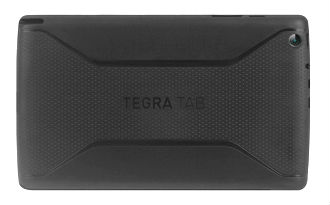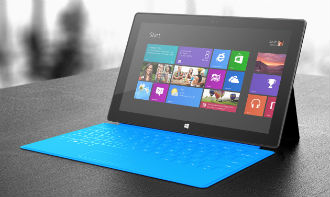 Nvidia is trying to reinvent itself and make up for lost ground on the PC front with Tegra, but simply designing chips isn’t enough for the GPU maker.
Nvidia is trying to reinvent itself and make up for lost ground on the PC front with Tegra, but simply designing chips isn’t enough for the GPU maker.
Earlier this year Nvidia showed off the Phoenix, a mid-range smartphone based on the upcoming Tegra 4i. Then it introduced the Shield, a curious little device which aims to combine PC streaming and Android gaming in one package.
There has been talk of Nvidia tablets for months and even that is hardly news. Nvidia’s first crack at the tablet market came last year, but it went under the radar. Kai was the name and it was a loose reference design for cheap tablets based on the Tegra 3, much like a Nexus 7. It never took off.
Now it seems Nvidia is ready to ditch reference designs and sell tablets under its own brand and the floodgates opened. Yesterday it emerged that the company trademarked “Tegra Tab” in the US, while Fudzilla reported that a high-end tablet based on the upcoming Tegra 5 is coming in early 2014. Today a Chinese tech site leaked the first images of an actual Tegra Tab. The photos reveal a 7-inch device with stylus support, microHDMI output and a rubberized back, similar to the Nexus 7.
There is still no word on specs, availability or pricing for the device, but the leaks are shedding more light on Nvidia’s tablet push. Like most tablet makers, Nvidia appears to be gunning for two form factors, 7 inches and probably something close to 10 inches. Tegra Tab is the brand name, but we’re not sure how Nvidia plans to play it out. It’s practically certain that Nvidia will roll out tablets under its own brand, but it might offer the exact same platform, perhaps even the brand name to its hardware partners.
Nvidia decided to design and market the Shield on its own. Since it is a rather odd device which doesn’t fall into any existing category and doesn’t compete with other Tegra products, the decision made sense.
However, if Nvidia starts selling tablets based on its latest SoCs, it could irk quite a few of its clients. Tegra 3 got plenty of traction in the tablet market, but Tegra 4 won’t replicate its success. The Tegra 3 powered a bunch of Android tablets last year, including the Nexus 7 and other Asus models. It also ended up in the Surface RT, which flopped quite spectacularly.
Now that Tegra 4 tablets are few and far between, it should be a lot easier for Nvidia to come up with its own tablets without burning too many bridges. Nvidia posted some rather disappointing Tegra figures in its latest earnings report yesterday and it pinned part of the blame on the failure of Windows RT. CEO Jen Hsun Huang admitted that Tegra revenue won’t recover in the short term.
Although the market for Android tablets is booming, much of the growth appears to be coming from cheap white-box tablets. Big vendors are struggling to turn a profit on high-end Android tablets and even hot 7-inchers aren’t doing very well. Entering the Android tablet market at this point is a bit like invading Russia in November.
So what’s behind Nvidia’s decision to start building Tegra based tablets, consoles and phones? It might be strategic thinking, diversifying and going after new markets should appease investors in the short term, although it might be a while before Nvidia’s Tegra consumer hardware operations turn a profit. Nvidia is no longer in consoles, the high volume low-end graphics market is disappearing and the Tegra business should fill the gap, backed by high-end consumer GPUs and professional graphics. Nvidia could potentially start bundling Shield consoles and cheap tablets with high end cards or allowing embattled AIB partners to build tablets based on its reference designs.
The other explanation is desperation rather than long-term strategic thinking. Tegra 3 was the company’s biggest success in the SoC market to date. It ended up in the HTC One X, Nexus 7 and Surface RT, along with a bunch of other devices. Even so, it wasn’t a big seller as the combined shipments of the Nexus 7 and Surface RT are estimated at 6.5 to 8 million units, depending on who you talk to. Asus and other vendors also used the Tegra 3 in their own designs, but very few of them actually shipped. Tegra 4 was late, too big and too hot, so it scored even fewer design wins and it doesn’t power a single phone.
Even if Nvidia somehow manages to score the majority of high-end Android tablet design wins, it would not end up with impressive volumes. An HTC One or Galaxy S4 routinely outsell all high-end Android tablets combined. Meanwhile Tegra 4i won’t be ready for the next four months and even when it ships it will go after mid-range phones. Nvidia is running out of options, fast. If it doesn’t score any high-volume design wins with the Tegra 5, it might have no choice but to use its chips in its own gear.
That is not a strategy. That is doing the only thing that can be done and calling it a strategy. That is tactics.
 In a rather surprising development, Currys and PC World will be selling Nvidia’s Tegra Note 7 tablet under their own brand.
In a rather surprising development, Currys and PC World will be selling Nvidia’s Tegra Note 7 tablet under their own brand.







